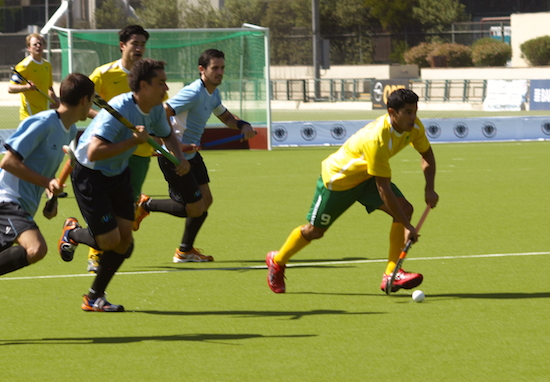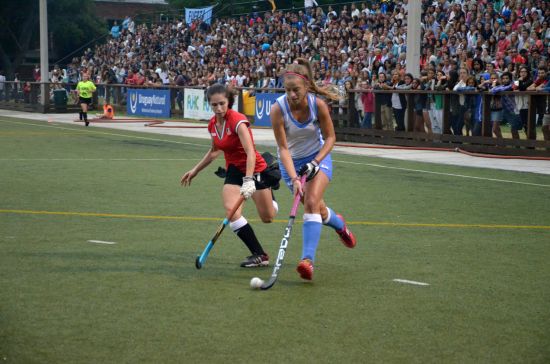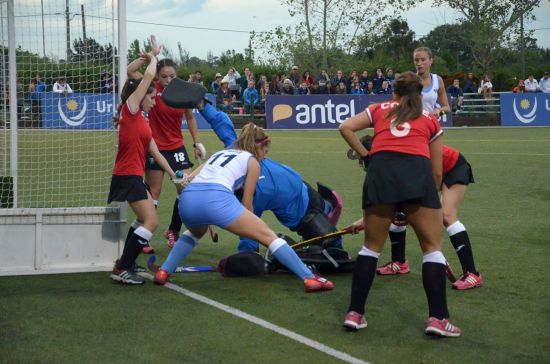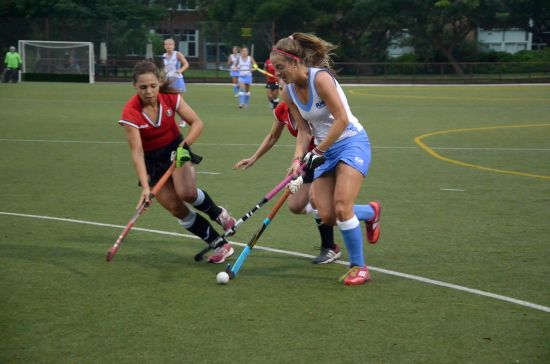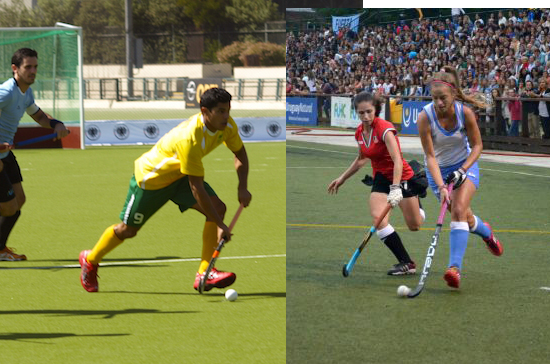
Florencia Norbis and Stephane Vehrle-Smith are two players who will go to the Pan American Games with high hopes. Florencia is a speedy goal machine who plays for high-flying Uruguay while Stephane plies his hockey trade in England, but has the spirit of Brazil running through his heart and soul.
Both Florencia and Stephane currently play for European sides – Florencia in Spain and Stephane in England – but in July they will be integral parts of their national sides in the Pan American Games. For Florencia, this will be another shot at Olympic qualification. Uruguay has already conquered many teams with a higher world ranking to qualify for the Hockey World League Semi Finals, which are an Olympic qualifier in their own right. The Pan Am Games will give the rapidly improving squad another shot at Olympic glory.
For Stephane and Brazil the path to the Olympics simply comes down to where his side finish in the Pan Am Games. Under the International Hockey Federation and International Olympic Committee ruling, Brazil must finish in sixth place or higher at the Pan Am Games to qualify for the 2016 Olympics.
The past few months have been an amazing period of progression for Uruguay and 23-year-old Florencia. In February, in front of a home crowd in Montevideo, Uruguay sealed their place in the Hockey World League Semi Finals, which will take place in Valencia, Spain, in June. They came second in the Round Two competition, just losing out to Italy in the final, but the performance was enough to see the team qualify for the next stage. And for Florencia, who bases her play on the attacking style of Luciana Aymar and Dutch star Eva de Goede, this was the moment for her to take centre stage, as she scored four goals in the competition to finish the sixth highest goal scorer overall.
Florencia plays her club hockey at the Sevilla-España Universidad in Spain and, as she explains, much of her training with the national team takes place in intensive blocks over a short period of time. In May she will be returning to Uruguay where the team will train for up to six hours every day for a fortnight. “This is how we are achieving the great results at the moment. Everyone, the coach and all the players, are just training so hard.”
She also puts the team’s success down to the physicality of the Uruguay team. “We are a young team, but we are very physical, which is a positive point in our team’s favor. However, we need to keep improving our technical side. We play a lot on sand pitches, which slows down our progress in that area. In preparation for the HWL and the Pan Am Games we will continue to work on our physical fitness and the technical side of the game.”
Speaking about her own game, Florenica says: “I know I am quick and strong, which is good for a forward, but I need to work on beating players on the reverse stick and my drag flick needs work also. But I do a very good goal celebration!”
When it comes to the tournament in Toronto, Florencia has no doubts who the favorites will be, but there is an air of defiance as she says: “Argentina and the USA are both very strong and superior to us in many ways but we see Canada and Chile as our direct competition. We know we are in great form right now and our confidence is high. We know we will have a great tournament.” And she adds, “We are always learning from the higher ranked teams that we play, but who knows, maybe some of these teams will learn something from Uruguay… the power of the Uruguay claw!”
Stephane Vehrle-Smith’s aim in hockey is simple. He wants to help Brazil qualify for the 2016 Olympics and help hockey to become the team sport that challenges football’s popularity in the South American country. “I believe in my team and that we can achieve something very special together. Nothing is easy but I'm very excited for the Pan Am Games and what a good performance there can lead to.”
Stephane was adopted as a six-month old baby, and was brought up in England. He started playing hockey at the age of six and now plays for Holcombe, one of the most progressive teams in the English Men’s National League. He studied at Oxford Brookes University but, since graduation, he has dedicated himself to hockey. Stephane, who is a full-time hockey player, says: ‘I finished studying in 2010 and since then I decided to give everything to hockey, hoping I could become a full time athlete and I achieved that. Combining training with Brazil and my club, Holcombe, can be stressful and tiring but it's managed by me and the people around me so I can be a part of both teams as much as I can. So I have my coaches to thank for that. It seems to be working out fine so far and I hope it continues so I can keep living my dream
Stephane has been part of the Brazil national senior side since 2012. He played his first tournament in the 2013 South American Championship where Brazil won bronze – this is the first major hockey medal that Brazil has ever won.
So how does the European style of hockey that Stephane has been brought up playing compare to the Brazilian style? “They're very different,” says Stephane, “Although, as a national team, we are aware that the leading countries in hockey are from Europe, so our style is becoming more European. The big difference for me is just the lack of experience within the squad in general towards phases of the game. Recognizing when to make certain plays. Hockey in Brazil is relatively new in comparison to a lot of other countries, so the experience isn't at the same level and that experience comes with time.”
But Stephane believes that Brazil has one very important strength when it comes to hockey and he says this will stand them in good stead as they chase Olympic qualification. “We have passion. The passion to always want to improve. Some South American teams accept their world ranking position but the Brazilian players watch, play and train as much as they can because they want to play at a higher level. That's a great trait to carry in my opinion.”
